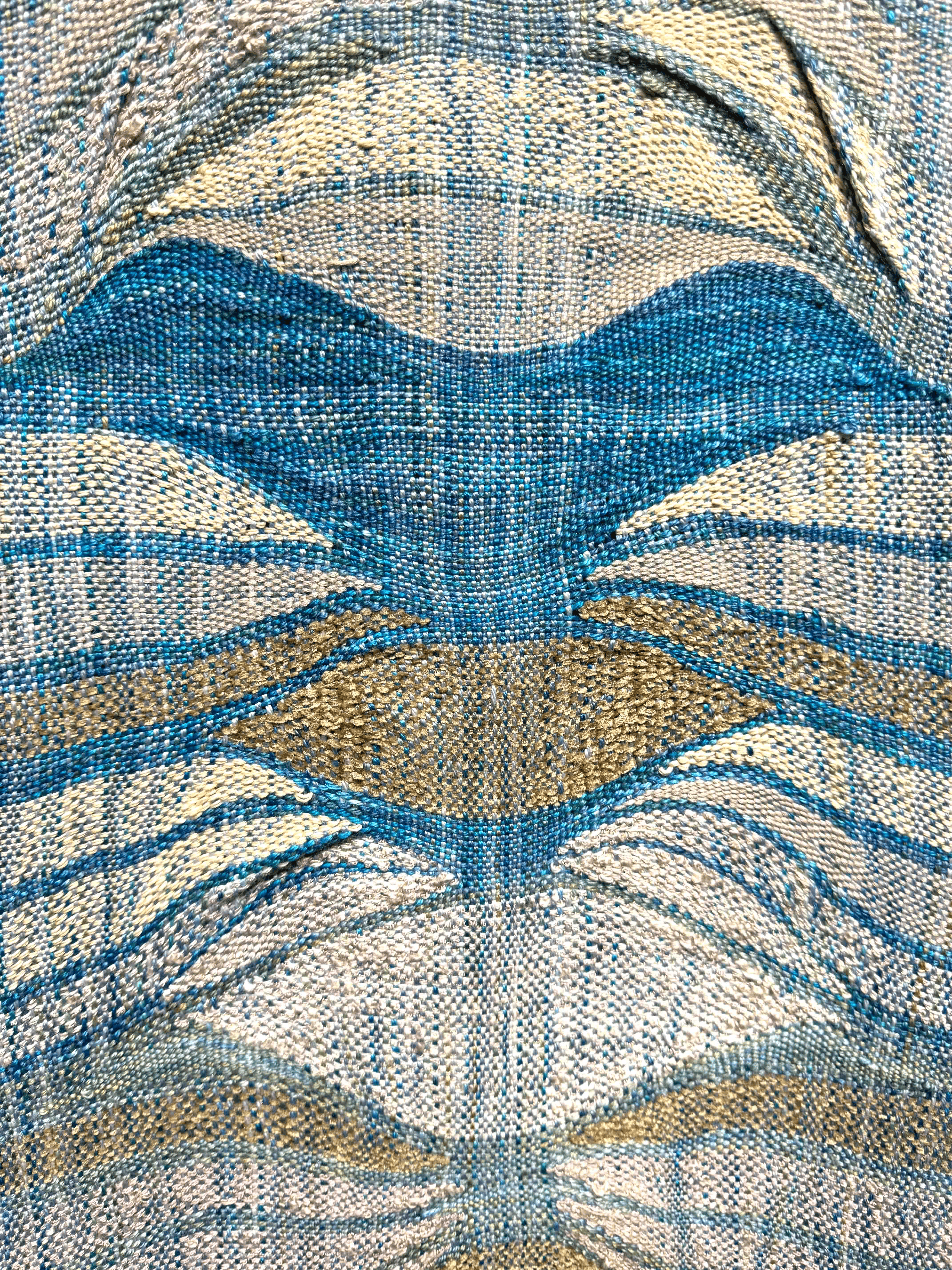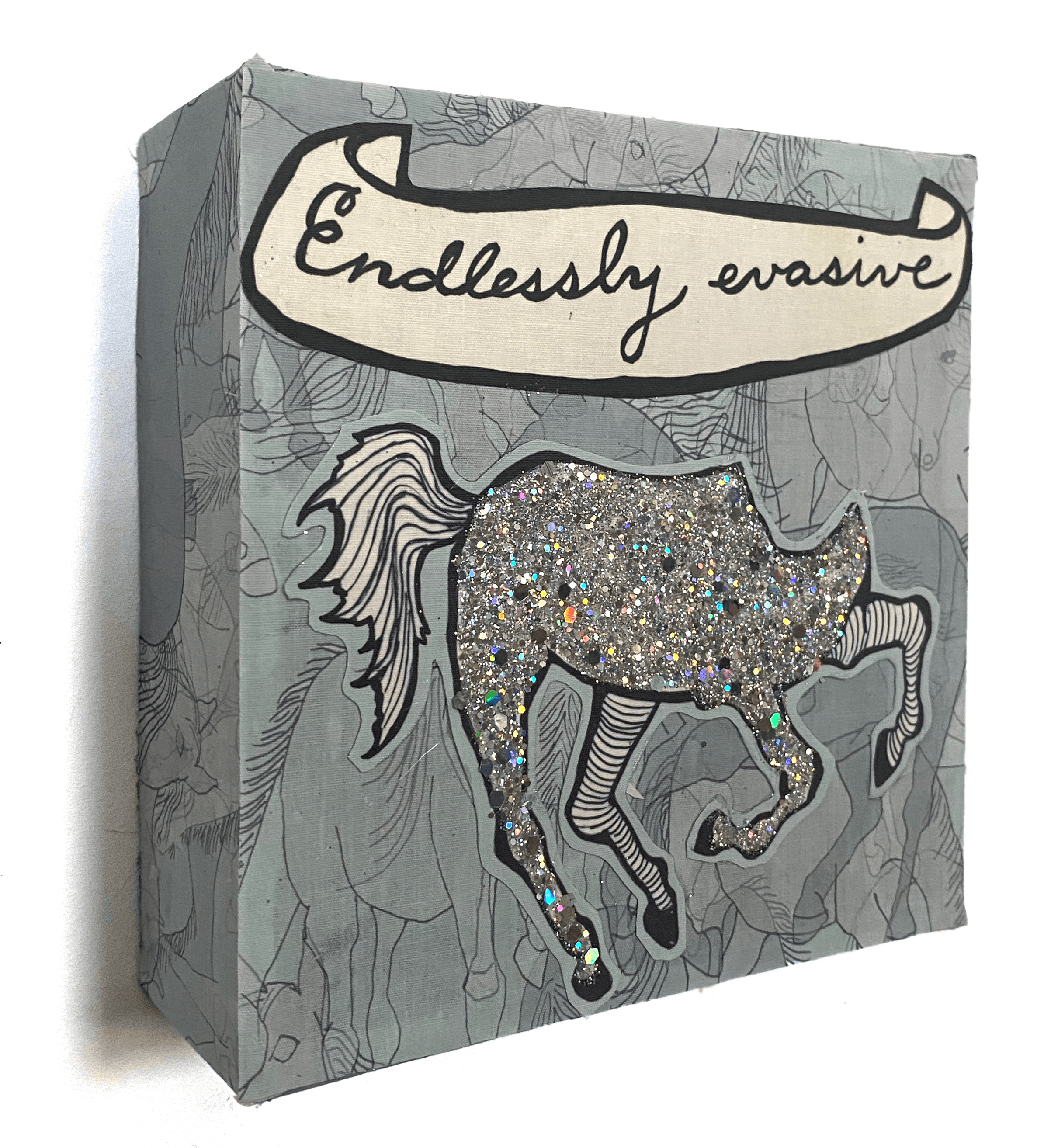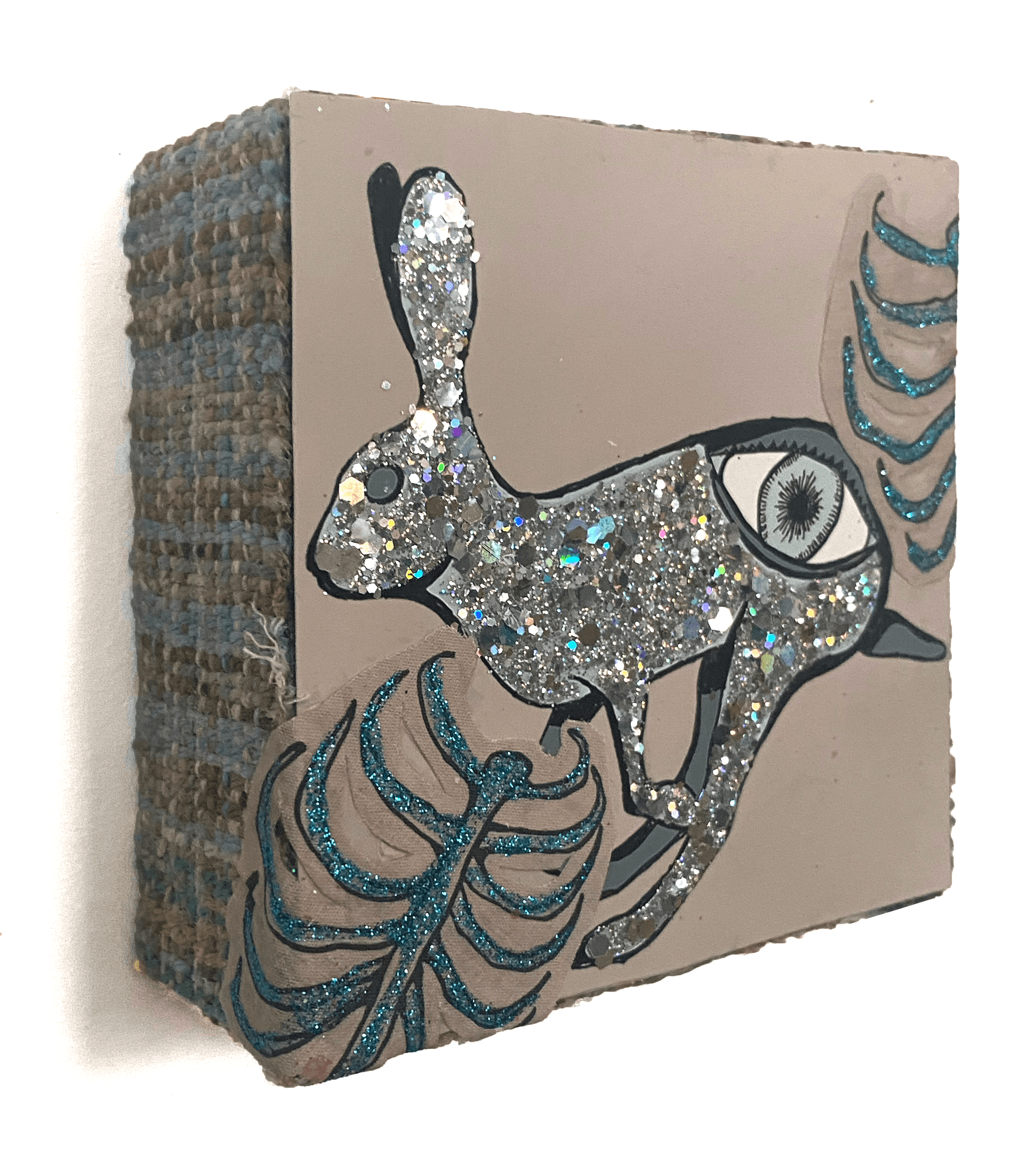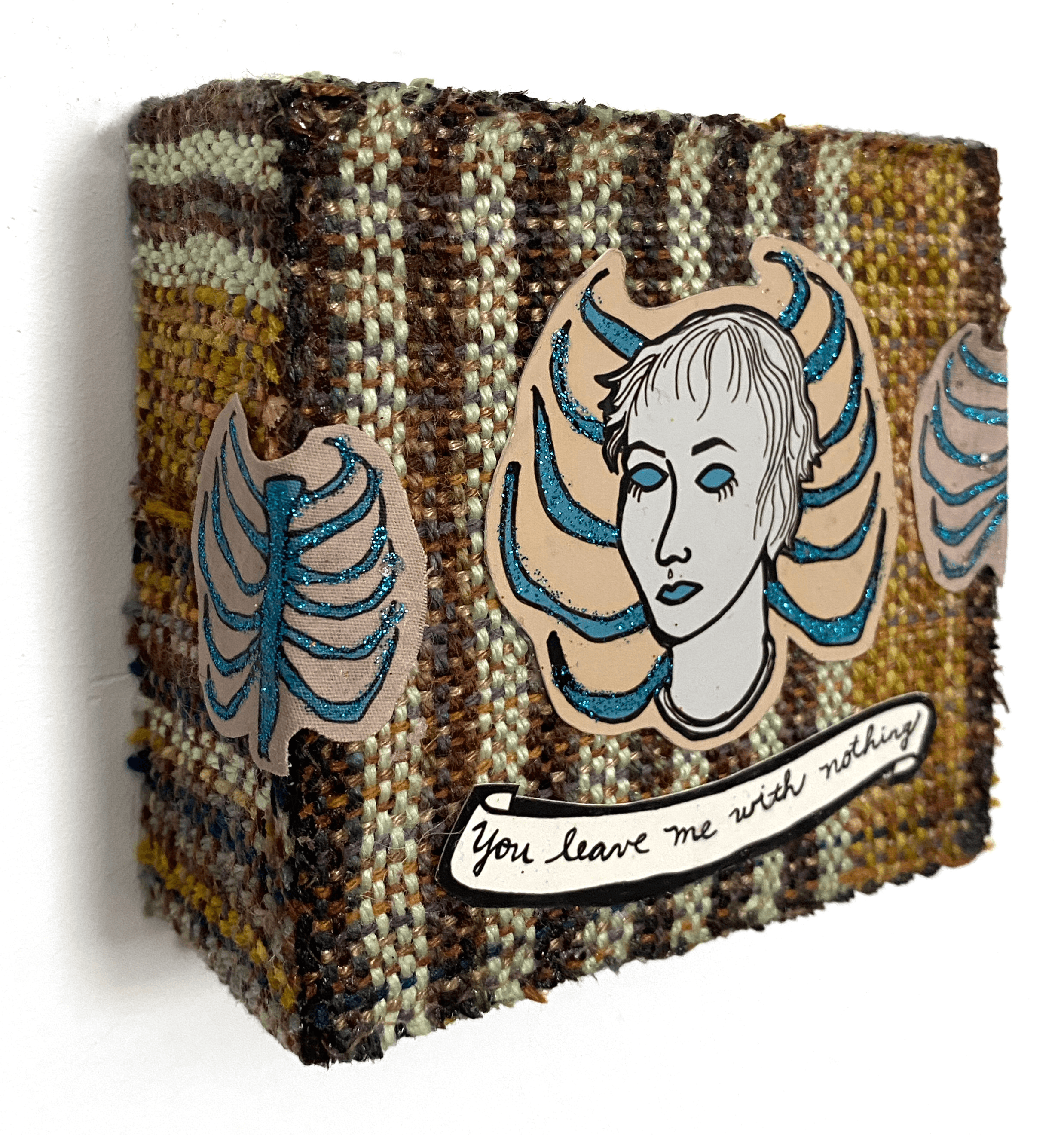We’re excited to introduce you to the always interesting and insightful Juliet Martin. We hope you’ll enjoy our conversation with Juliet below.
Alright, Juliet thanks for taking the time to share your stories and insights with us today. What’s been the most meaningful project you’ve worked on?
I was between projects, what I call “weaving purgatory.” It is terrible. I hate my work. I hate myself. I hate my husband. I hate everything. I had been given an installation space at a gallery, FiveMyles, in Brooklyn. I needed an idea to turn the room into an art piece. I had nothing. I told my therapist I really wanted to address mental health, a theme important to my work. I reminded her that I love talking about relationships. Suddenly, it was clear: the longest relationship I have ever had in my life is with anxiety. My installation would be “Anxiety Is a Love I Cannot Break Up With.”
I still had nothing. But I knew, for sure, was that I was anxious. I started making symbols to tell my story. Bees, horses, angels – each representing some part of my discomfort. A ribcage covered in blue glitter protected me from my anxiety – and I couldn’t stop adding it here and there.
I made over 40 little anxiety sculptures ranging in size from 4” x 4” to 8” x 8”, and about 2” high. They were wooden boxes covered in my symbols, glitter, strings of text, and hand-woven and machine-made fiber. They were playful and eerie and frantic, all at once. Sort of like anxiety…
For months I had planned to hang the boxes on the walls. Later, on my back for a month after surgery, this popped into my mind: blue fur! I imagined a huge table with the little boxes nestled in its blue fur. I couldn’t wait to get off the couch.
Continuing the theme of the ribcage, I wove a 7’ long tapestry with rib-like patterns running down the spine. I cut curves on the edges to accent the bone-like structure. It would hang at the far end of the fur table, the viewer’s dining companion.
I had a 2’ x 2’ ribcage made from Masonite to look over the installation. When I got it, I was so excited I immediately covered it in glitter. It hangs over the viewer’s head, on another wall. It had two intentions: to emphasize the unity of the collection, and to act as a reminder of protection.
On the same wall as the ribs, but hidden in the far corner, just above the floor, would be a little 6” x 6”, pink-glitter-encrusted tile with a scorpion trying to escape the room. Its text, “I cannot get away,” mirrors the viewer trying to escape the room, trying to escape anxiety.
Each person who entered the room connected with a different anxiety box – everyone saw their own anxiety staring back at them. One woman who said her daughter suffered from bad anxiety was going to share my statement with her, to give her desperately needed comfort. I had succeeded in both sharing my anxiety with other people and giving them some insight into their own.


Awesome – so before we get into the rest of our questions, can you briefly introduce yourself to our readers.
Over 20 years ago I worked as a digital artist and taught in several institutions. Now I’m an independent fiber artist. I combine weaving, drawing, sewing, dyeing, and spinning into fabric sculptures, my fiber memoirs. My love of fiber, as both a technique and a symbolic presence, comes through in these emotional, often humorous pieces.
My autobiographically driven artworks capture the physical pain of heartbreak. My detail-oriented process conveys my insecurity. My collection “Household Items Remind Me of You” illustrated my fear of my husband getting Covid and me being left with the only thing that couldn’t get sick – my furniture. I had turned deepest fears into tapestries.
As a digital artist, I had set rules for myself with programming. You can’t have a typo in your code or it won’t work – no maybes, just right.
But with weaving, I use and break different kinds of rules. I actually don’t use patterns. For example, I limit my palette at the beginning of every project; my process for that follows a formula. I choose 4-5 colors that are close in a color range – say, a collection of blues. Then I choose a glaring accent – maybe screaming yellow. It’s less spontaneous than it looks.
As for patterns, what would be closest, for me, is what I call repetitions, using a loose structure to accent entirely freeform weaving. Ironically, the freeform weaving is done very deliberately: sometimes I make “waves” to animate the design. I might add dyed ribbon, or vary the weight of the yarn; if it’s my own yarn, I’ve probably already overspun it, making it thick and chunky. Making it improvised takes a lot of decision-making.
My rules are meant to look like there are no rules.
The recent drawings in my collections are put together very deliberately. For “I See You Falling Out of Love with Me” I created 2 groups of what I’ll call puzzle pieces. This included about 5 or 6 drawings of falling headless bodies and a collection of animal skulls. For each piece I would combine these parts, like a falling body in a red dress with a buzzard skull, or a falling body in overalls paired with a dinosaur skull. Then, I would work these creatures into compositions on woven backgrounds.
I mix and match these drawings, like emojis, to send a message with a subtle language. Mixing and matching images forces a structure which drives me to create and recreate a message. I have to come up with creative solutions to make sure themes don’t become formulaic.
It helps me build a collection of pieces that work together within a defined language.
It gives me something to push against creatively.


What do you think is the goal or mission that drives your creative journey?
I want people to like my work. But I really want them to like themselves.
I think, I know, everybody has anxiety. I hope seeing it explored in a disturbing but playful context will allow them to appreciate anxiety as more than just a flaw. It also gives a peek into my neuroses; people get to know me a little better, see a bit of how my brain works and maybe how theirs does, too. Let me be a springboard for bigger issues. I’ve been in therapy for years – I can talk about myself forever. I want my vulnerability and weirdness to make people a little uncomfortable, but also make them laugh and think.
With each collection I make, there is usually one person at the opening who really gets it. A young man asked for a hug after seeing my show about breaking up. When I did a show about loss, a girl approached me and said I made her feel not alone. I did a show about everyone staring at me. After I gave a talk to a group of 8th graders about my show, a student came up to me and said it gave her comfort to know that someone felt like she did. That is everything. That is why I make art.


Let’s talk about resilience next – do you have a story you can share with us?
I was diagnosed with bipolar disorder 30 years ago. The first 20 years were the most difficult: not responding to medicine, having electroconvulsive treatments, months-long depressions, and hospitalizations. Hysterical crying that could be broken only by an antipsychotic. Manias felt like putting salt in my coffee.
But my work never stopped. Driven by the passion to create, my art was always there. Was it all good quality? No. Was it all necessary for my sense of self? Yes. Today, my mental illness is mostly anxiety-driven depression. I panic about silly things like worrying about Fed Ex going out of business, but with the help of my family, my therapist, and a little (or a lot!) of medication, I can move forward.
I did a collection called “You Don’t Look Crazy” illustrating my experiences with bipolar disorder to discuss perceptions surrounding mental illness. Mental illness “explains” everything from mass murder to celebrity deaths to everyday cruelty, but little else. Bipolar disorder isn’t the news of the day. It is how people like me live.
Contact Info:
- Website: https://julietmartin.com
- Instagram: https://instagram.com/remotelyjuliet
- Facebook: https://facebook.com/remotelyjuliet




